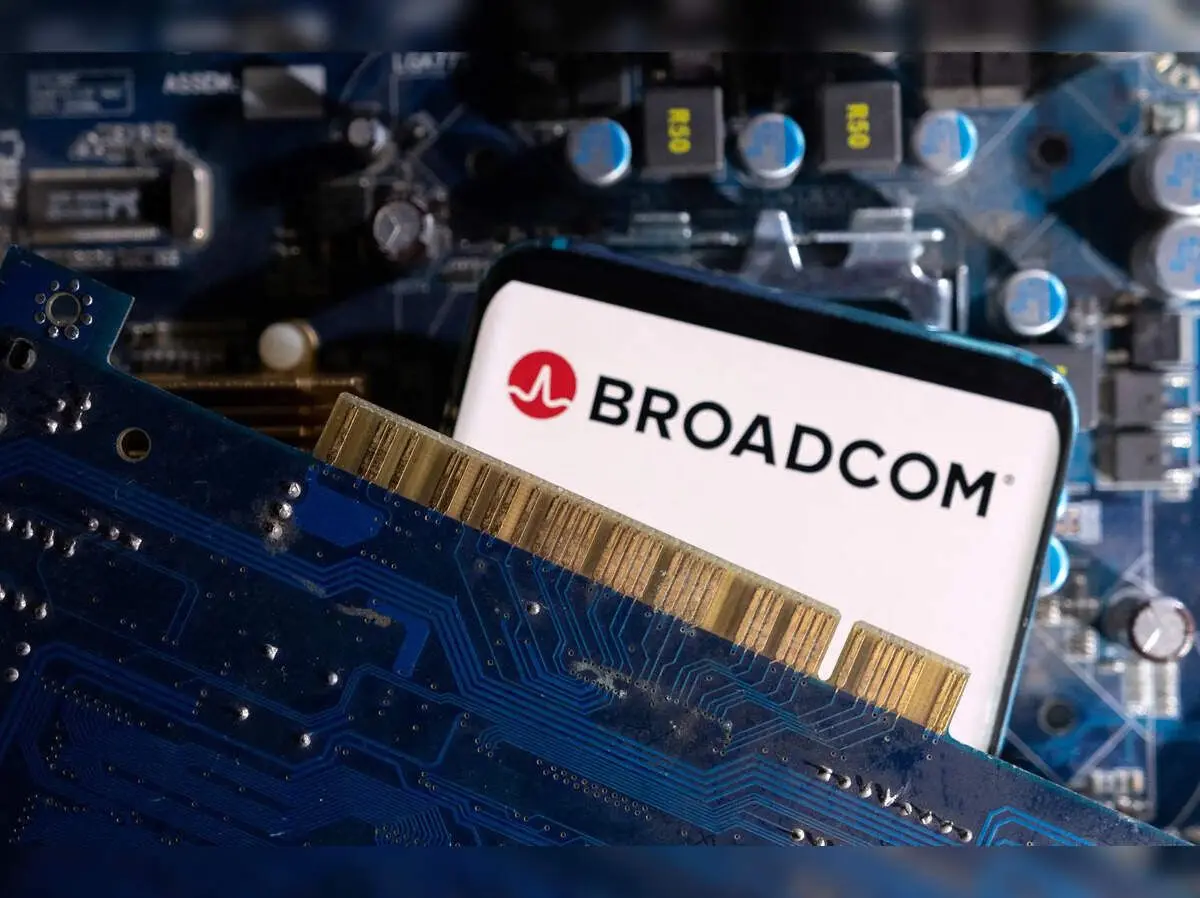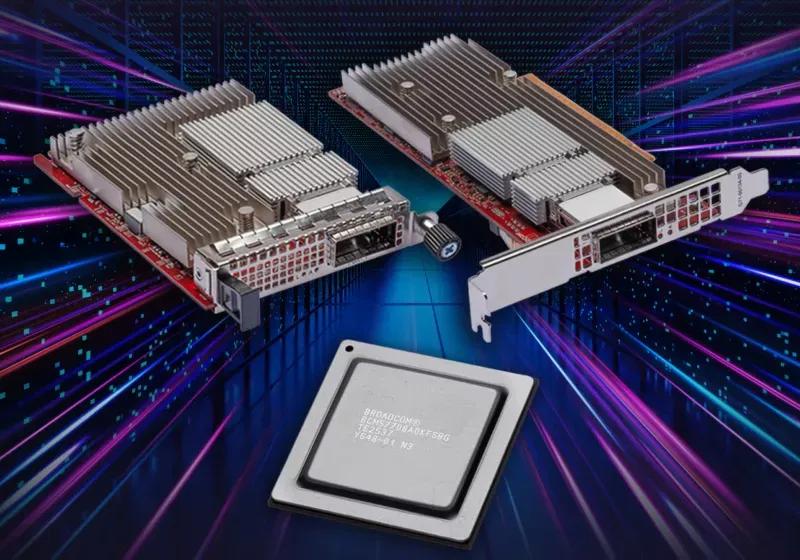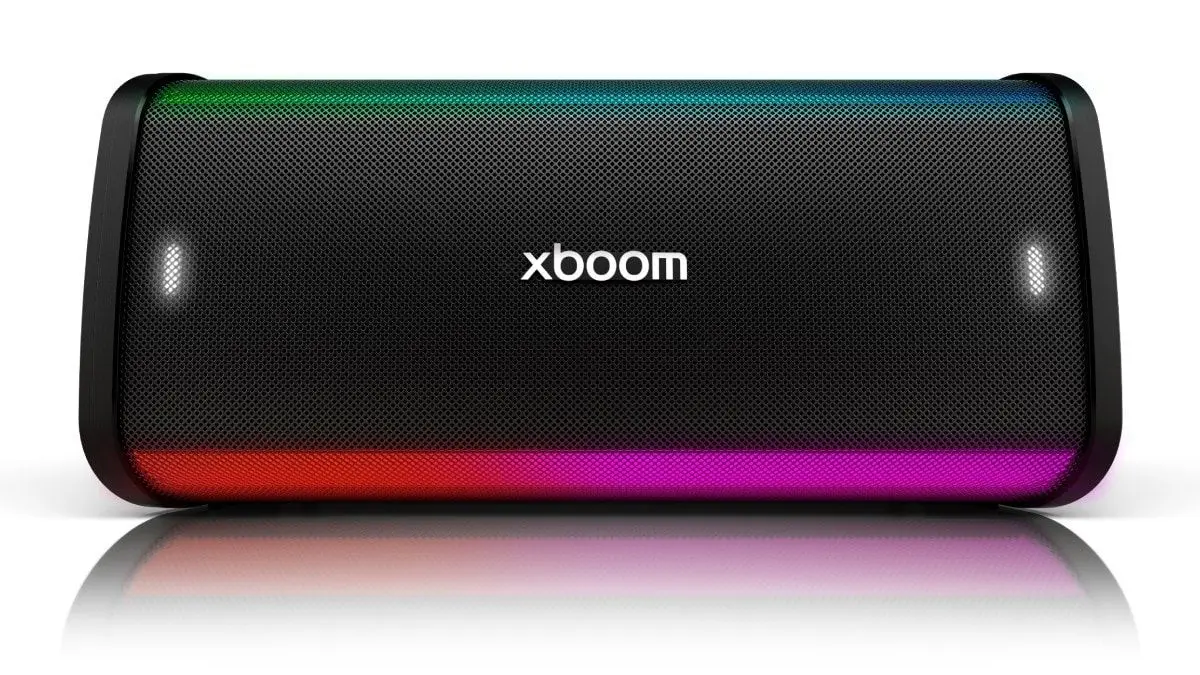Broadcom Unveils Tomahawk Ultra: A New Networking Chip to Accelerate AI Processing
3 Sources
3 Sources
[1]
Broadcom launches new Tomahawk Ultra networking chip in AI battle against Nvidia
SAN FRANCISCO, July 15 (Reuters) - Broadcom's (AVGO.O), opens new tab chip unit unveiled on Tuesday a new networking processor that aims to speed artificial intelligence data crunching, which requires stringing together hundreds of chips that work together. The new chip is the latest piece of hardware that Broadcom has brought to bear against rival AI giant Nvidia (NVDA.O), opens new tab. Broadcom helps Alphabet's Google (GOOGL.O), opens new tab produce its AI chips, which are perceived by developers and industry experts as one of the few viable alternatives to Nvidia's powerful graphics processors (GPUs). Dubbed the Tomahawk Ultra, Broadcom's chip acts as a traffic controller for data whizzing between dozens or hundreds of chips that sit relatively closely together inside a data center, such as inside a single server rack. The chip aims to compete with Nvidia's NVLink Switch chip which has a similar purpose, but the Tomahawk Ultra can tie together four times the number of chips, Ram Velaga, a Broadcom senior vice president, told Reuters in an interview. And instead of a proprietary protocol to move the data, it uses a boosted-for-speed version of ethernet. Both companies' chips help data center builders and others tie as many chips as possible together within a few feet of each other, a technique the industry calls "scale-up" computing. By ensuring close-by chips can communicate with each other quickly, software developers can summon the computing horsepower necessary for AI. Taiwan Semiconductor Manufacturing (2330.TW), opens new tab will manufacture the Ultra line of processors with its five nano-meter process, Velaga said. The processor is now shipping. It took Broadcom's teams of engineers roughly three years to develop the design, which was originally built for a segment of the market known as high-performance computing. But as generative AI boomed, Broadcom adapted the chip for use by AI companies because it is suited to scaling up. Reporting by Max A. Cherney in San Francisco; Editing by Leslie Adler Our Standards: The Thomson Reuters Trust Principles., opens new tab * Suggested Topics: * Artificial Intelligence Max A. Cherney Thomson Reuters Max A. Cherney is a correspondent for Reuters based in San Francisco, where he reports on the semiconductor industry and artificial intelligence. He joined Reuters in 2023 and has previously worked for Barron's magazine and its sister publication, MarketWatch. Cherney graduated from Trent University with a degree in history.
[2]
Broadcom launches new Tomahawk Ultra networking chip in AI battle against Nvidia - The Economic Times
Broadcom's chip unit unveiled on Tuesday a new networking processor that aims to speed artificial intelligence data crunching, which requires stringing together hundreds of chips that work together. The new chip is the latest piece of hardware that Broadcom has brought to bear against rival AI giant Nvidia. Broadcom helps Alphabet's Google produce its AI chips, which are perceived by developers and industry experts as one of the few viable alternatives to Nvidia's powerful graphics processors (GPUs). Dubbed the Tomahawk Ultra, Broadcom's chip acts as a traffic controller for data whizzing between dozens or hundreds of chips that sit relatively closely together inside a data center, such as inside a single server rack. The chip aims to compete with Nvidia's NVLink Switch chip which has a similar purpose, but the Tomahawk Ultra can tie together four times the number of chips, Ram Velaga, a Broadcom senior vice president, told Reuters in an interview. And instead of a proprietary protocol to move the data, it uses a boosted-for-speed version of ethernet. Both companies' chips help data center builders and others tie as many chips as possible together within a few feet of each other, a technique the industry calls "scale-up" computing. By ensuring close-by chips can communicate with each other quickly, software developers can summon the computing horsepower necessary for AI. Taiwan Semiconductor Manufacturing will manufacture the Ultra line of processors with its five nano-meter process, Velaga said. The processor is now shipping. It took Broadcom's teams of engineers roughly three years to develop the design, which was originally built for a segment of the market known as high-performance computing. But as generative AI boomed, Broadcom adapted the chip for use by AI companies because it is suited to scaling up.
[3]
Broadcom launches new Tomahawk Ultra networking chip in AI battle against Nvidia
SAN FRANCISCO (Reuters) -Broadcom's chip unit unveiled on Tuesday a new networking processor that aims to speed artificial intelligence data crunching, which requires stringing together hundreds of chips that work together. The new chip is the latest piece of hardware that Broadcom has brought to bear against rival AI giant Nvidia. Broadcom helps Alphabet's Google produce its AI chips, which are perceived by developers and industry experts as one of the few viable alternatives to Nvidia's powerful graphics processors (GPUs). Dubbed the Tomahawk Ultra, Broadcom's chip acts as a traffic controller for data whizzing between dozens or hundreds of chips that sit relatively closely together inside a data center, such as inside a single server rack. The chip aims to compete with Nvidia's NVLink Switch chip which has a similar purpose, but the Tomahawk Ultra can tie together four times the number of chips, Ram Velaga, a Broadcom senior vice president, told Reuters in an interview. And instead of a proprietary protocol to move the data, it uses a boosted-for-speed version of ethernet. Both companies' chips help data center builders and others tie as many chips as possible together within a few feet of each other, a technique the industry calls "scale-up" computing. By ensuring close-by chips can communicate with each other quickly, software developers can summon the computing horsepower necessary for AI. Taiwan Semiconductor Manufacturing will manufacture the Ultra line of processors with its five nano-meter process, Velaga said. The processor is now shipping. It took Broadcom's teams of engineers roughly three years to develop the design, which was originally built for a segment of the market known as high-performance computing. But as generative AI boomed, Broadcom adapted the chip for use by AI companies because it is suited to scaling up. (Reporting by Max A. Cherney in San Francisco; Editing by Leslie Adler)
Share
Share
Copy Link
Broadcom launches Tomahawk Ultra, a networking processor designed to speed up AI data processing by connecting multiple chips efficiently, challenging Nvidia's dominance in the AI hardware market.
Broadcom's New AI Networking Chip
Broadcom, a major player in the semiconductor industry, has unveiled its latest innovation in the artificial intelligence (AI) hardware space. The company's chip unit announced the Tomahawk Ultra, a new networking processor designed to accelerate AI data processing by efficiently connecting multiple chips
1
.
Source: ET
Tomahawk Ultra: A Game-Changer in AI Computing
The Tomahawk Ultra serves as a sophisticated traffic controller for data moving between dozens or hundreds of chips within a data center. This new chip is specifically designed to address the growing demands of AI computing, which requires the coordination of numerous processors working in tandem
2
.Competing with Nvidia
Broadcom's latest offering aims to compete directly with Nvidia's NVLink Switch chip. According to Ram Velaga, a Broadcom senior vice president, the Tomahawk Ultra boasts an impressive capability of connecting four times the number of chips compared to Nvidia's solution. Furthermore, instead of using a proprietary protocol for data transfer, Broadcom's chip utilizes a high-speed version of Ethernet
1
.Scale-Up Computing and AI Performance
Both Broadcom and Nvidia's chips facilitate what the industry terms "scale-up" computing. This approach involves connecting as many chips as possible within close proximity, typically within a few feet of each other in a data center. By ensuring rapid communication between nearby chips, software developers can harness the immense computing power required for AI applications
3
.Related Stories
Manufacturing and Development
Taiwan Semiconductor Manufacturing (TSMC) will produce the Tomahawk Ultra using its advanced 5-nanometer process. Broadcom has already begun shipping the processor to customers
2
.The development of the Tomahawk Ultra took Broadcom's engineering teams approximately three years. Initially designed for high-performance computing, the chip was adapted for AI applications due to the boom in generative AI and its suitability for scaling up computing power
1
.Broadcom's Position in the AI Market
This new chip represents Broadcom's latest effort to challenge Nvidia's dominance in the AI hardware market. Notably, Broadcom has been collaborating with Alphabet's Google to produce AI chips, which are considered by developers and industry experts as one of the few viable alternatives to Nvidia's powerful graphics processors (GPUs)
3
.References
Summarized by
Navi
Related Stories
Recent Highlights
1
Meta acquires Manus for $2 billion, adding revenue-generating AI agents to its platforms
Business and Economy

2
Nvidia locks in $20 billion Groq deal, securing AI chip rival's technology and talent
Business and Economy

3
Geoffrey Hinton warns AI job replacement will accelerate in 2026 as systems gain new capabilities
Technology








